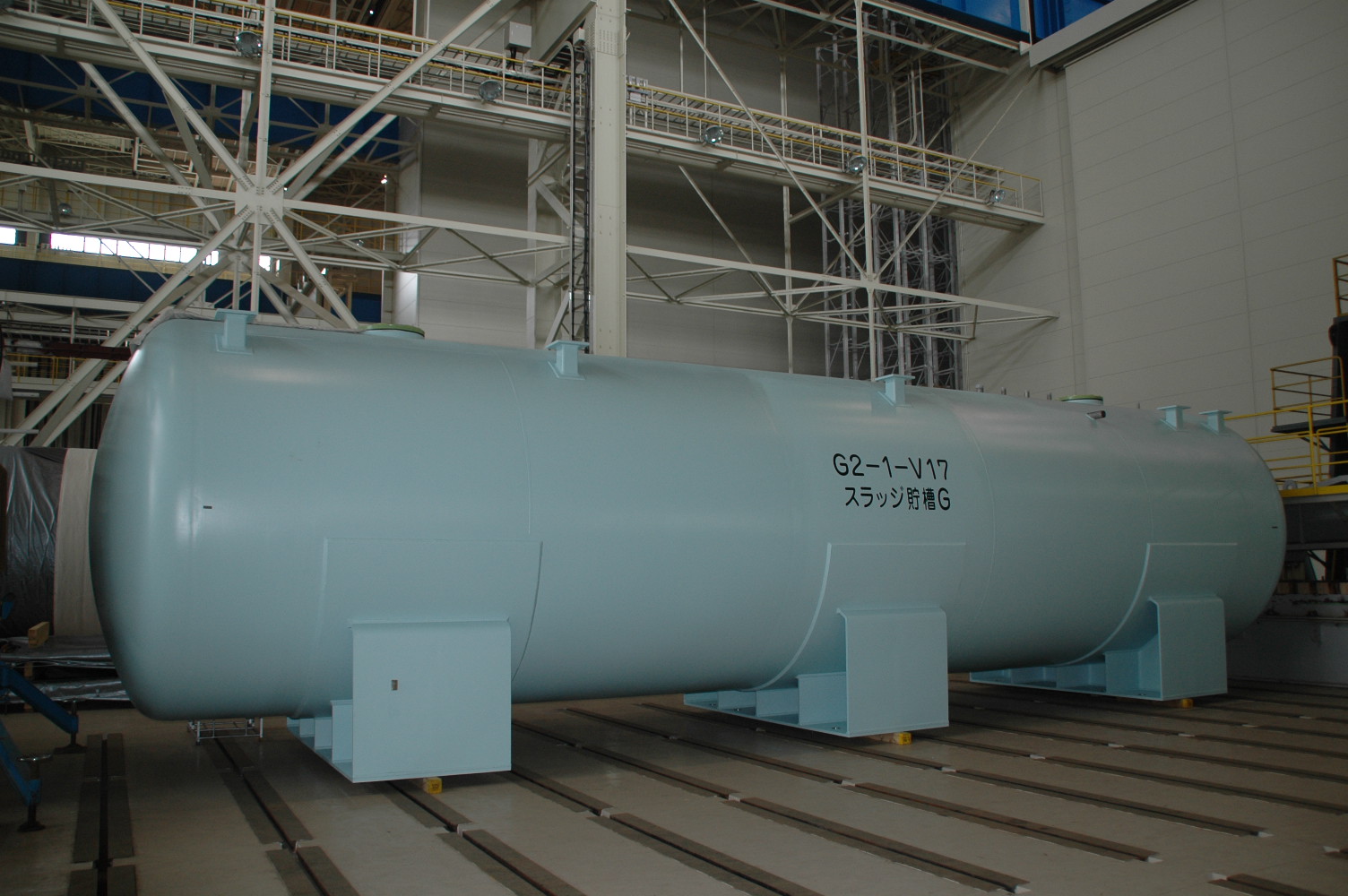
Long-term storage of secondary radioactive waste resulting from contaminated water treatment
Jul.11,2014

The Japan Atomic Energy Agency (JAEA) evaluated the potential hazards pertaining to the storage of waste zeolite and sludge that were used to treat contaminated water. The JAEA concluded that there exists a very low risk of hydrogen fire or hydrogen cyanide poisoning due to the radiolysis reactions occurring in the storage areas.
When the cesium adsorption system is used to treat the contaminated water, spent zeolite is produced as the secondary radioactive waste; these secondary wastes are stored in vessels at the site. The JAEA estimated the concentration of hydrogen produced by the radiolysis of water in the vessels. The measured concentration of hydrogen was found to be below the lower explosion limit. In addition, the JAEA also found that when the storage vessels are made of stainless steel, the likelihood of local corrosion on storing the spent zeolite is drastically reduced. Further studies will be conducted to clarify the rationale for the observed reduction in local corrosion.
The sludge generated from the water decontamination system needs to be transferred to the temporary storage tanks. A concern related to this process is that the radiolysis in the sludge can produce explosive hydrogen gas and hazardous hydrogen cyanide. The JAEA performed studies using simulated sludge and confirmed that the concentration of hydrogen can be maintained below the explosion limit by using a gas purge system. Furthermore, the concentration of hydrogen cyanide generated is below the lower detection limit. The water-leakage life-time of the temporary storage tank, made of carbon steel, is estimated to be greater than 10 years; this was determined by evaluating the corrosion rate of carbon steel in a simulated environment.
※Progress Status and Future Challenges of the Mid-and-Long-Term Roadmap towards the Decommissioning of TEPCO’s Fukushima Daiichi Nuclear Power Station Units 1-4 (Outline) (March 27, 2014)http://www.meti.go.jp/english/earthquake/nuclear/decommissioning/pdf/20140327-e.pdf
(English)
Inquiries regarding this topic may be directed to IRID via E-mail








